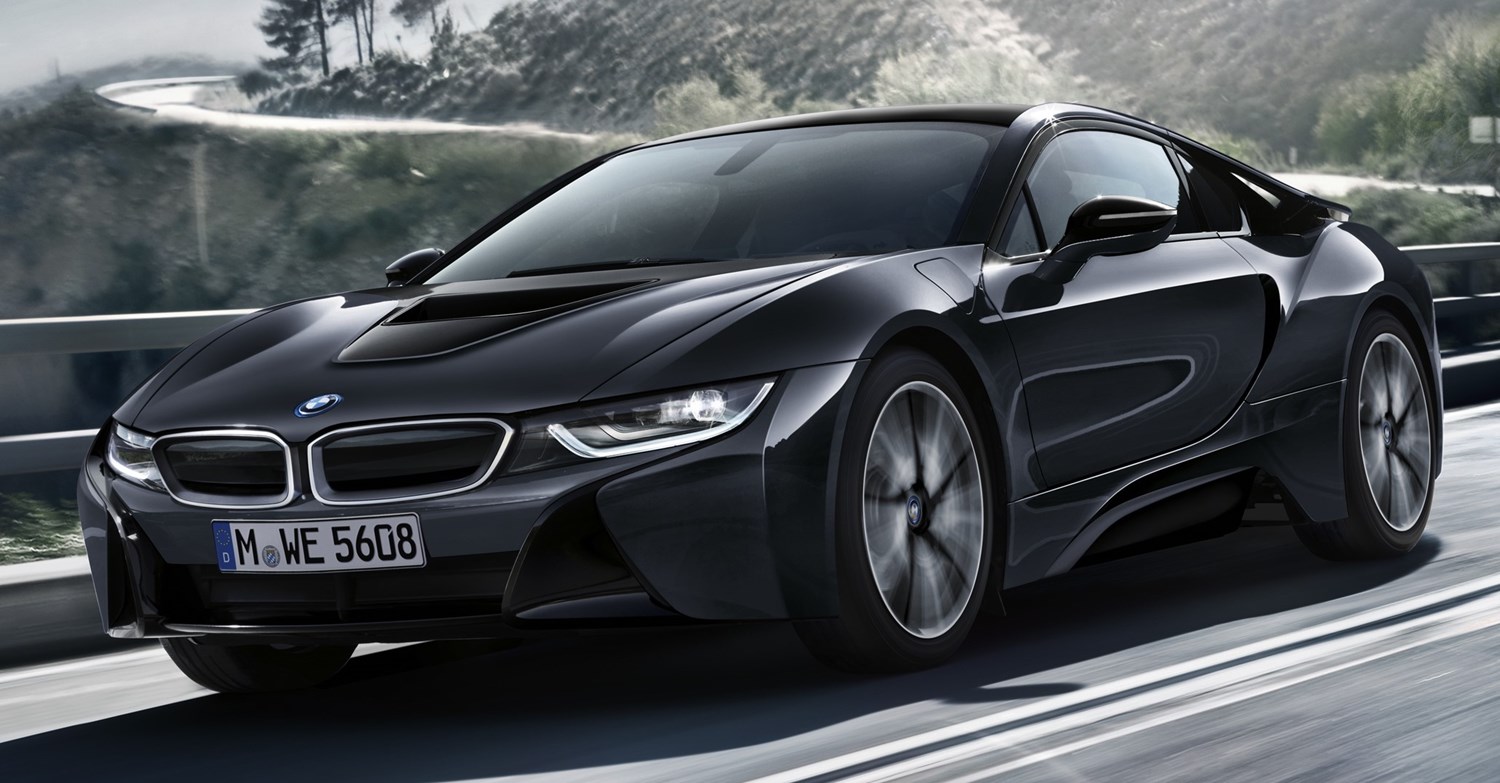Latest model
There is only the one generation of i8 so far, so what you see in all of the photographs is what you'll get.
The i8 is part of what BMW calls a 'sub-brand', known as BMW i. This comprises just two cars for now, with the hatchback i3 and this sportier i8, but the i division also supplies electrified powertrain technologies for other BMW hybrid models.
It looks almost entirely unlike any other BMW product – some of the front end is similar and unmistakably BMW with the kidney grille, but that's where the similarities end. It's obviously a radical departure from the rest of the range, even before you get to opening the 'dihedral' butterfly doors.
Although largely unrelated to most BMWs, the i8 is powered by a three-cylinder turbocharged petrol engine very similar to the one you'll find in a Mini. It produces 228hp, which may not seem like too much for a performance car, but it is backed up by another 129hp from the 96kW electric motor. In combination, they produce only 49g/km CO2, which is equivalent to 134.5mpg.
There are no trim levels for the i8, so you won't need to mull over the specifications too much, although there have been occasional special editions of the car such as the current Protonic Frozen Black model. There are surprisingly few options too, and largely cosmetic ones at that. It's a very well-specified car, but at more than £100,000 you'd expect it to be!
Ultimately there's not a lot of choice with the i8, so other than the paint colour and wheels you won't have many hard decisions – at least until the convertible model arrives in 2018.
Value for money
It's rather hard to claim that any car that costs £106,310 is good value for money, but the i8 may come close.
The standard equipment for the i8 is just about everything BMW can fit to the car.
This includes 20-inch alloy wheels, adaptive LED headlights, adaptive cruise control, parking sensors and camera, dynamic brake lights, electric-adjustable and heated front seats, leather upholstery, heated, folding and dimming side mirrors, automatic two-zone air-conditioning, BMW connected drive services, navigation, DAB radio, Bluetooth connectivity, a seven-speaker audio system with 20Gb hard drive, and a head-up display.
Running costs are good, at least on paper. The 49g/km CO2 rating means no first-year road tax, but you'll suffer the penalty of the high price with a £440 annual bill from the second year onwards.
That emissions rating equates to 134.5mpg, which is extraordinarily good, but doesn't quite tell the whole story. To achieve such figures you'll need a fully-charged battery and a city-heavy driving route, to ensure you use as much of the 23-mile electric range and as little of the petrol engine as possible. Exploit the combined performance of both and you can expect 30mpg to be a more usual return.
Insurance costs are high though. Hybrid cars are always more expensive to insure thanks to the battery packs, but with a list price over £100,000 and sub-5s acceleration figures, the i8 is instantly a group 50 car – the highest possible group. However, the car is relatively well insulated against depreciation thanks to rarity, a desirable design and the tax-friendly emissions ratings.
Looks and image
It's difficult to get away from just how unique the i8 looks. It may not be to everyone's tastes, particularly the slightly ungainly rear end, but it stands out in any company and it's quite clearly an expensive car. When originally launched, it was subject to long waiting lists in the UK and it's experienced some boosts in image too, with appearances in film.
The Leicester City chairman bought all of the players an i8, in Leicester City blue, following the team's unlikely Premier League win in 2016.
The environmentally friendly image is a little offset by the status symbol nature of the car and the brand in general. BMW owners and drivers will often be on the receiving end of some less than polite road manners from others on reputation alone.
Space and practicality
It may surprise you to learn that the i8 is actually a four-seat car, but don't be under any illusions that they're usable seats. The two in the back are extremely confined and you may feel guilty about even putting your luggage back there, never mind actual people. Getting into the front is actually awkward too, with the butterfly doors and very high sills making access very difficult.
If someone parks too close to the driver's side, even opening the doors wide enough to get in will be a challenge.
There is a boot on the i8 and, unusually, it's in the normal place for a car rather than where you'd find it on most other mid-engined cars in the nose. It is a fairly derisory space though, at just 154 litres, and sits between the petrol engine and the rear of the car. Since the rear seats are just about unusable for people, you can always use that space for luggage too.
EuroNCAP hasn't tested the i8, so it has no official safety rating. However, it is packed with electronic driver aids, collision avoidance and collision mitigation technology and a sufficient quantity of airbags. That CFRP safety cell should provide a high level of protection too.





